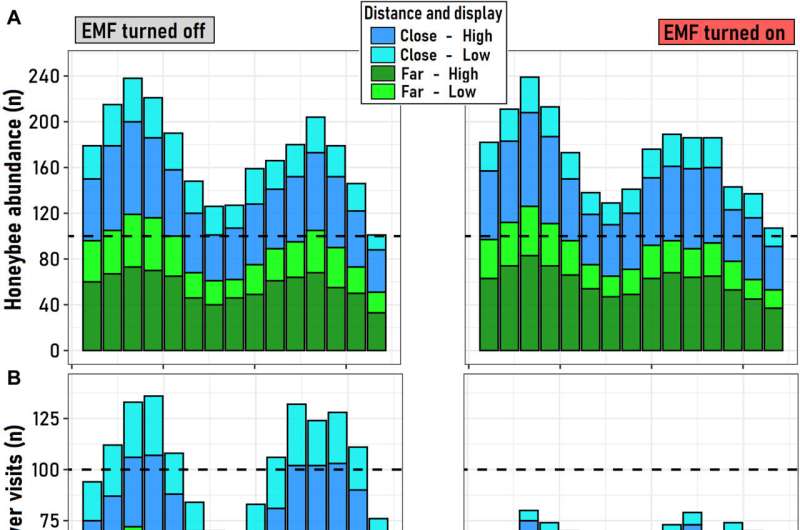May 15, 2023 report
This article has been reviewed according to Science X's editorial process and policies. Editors have highlighted the following attributes while ensuring the content's credibility:
fact-checked
peer-reviewed publication
trusted source
proofread
Evidence found of electromagnetic fields from electrical towers disrupting pollinating honeybees

A multi-institutional team of biologists and ecologists from Chile and Argentina has found evidence suggesting that electromagnetic fields emanating from electrical towers disrupt pollinating honeybees. The research is published in the journal Science Advances.
Prior research has suggested that electromagnetic radiation emitted from power lines may interfere with plants and animals in the vicinity—though some have suggested that the unique habitat of the treeless regions where power lines pass through forests may confer some natural benefit.
In this new effort, the research team focused specifically on the impact of electromagnetic radiation emitted from electrical towers on honeybees—they chose honeybees because prior research has shown they navigate using natural electromagnetic fields. And they chose to use electrical towers rather than power lines themselves because they had access to similar towers without power lines, allowing for comparison purposes.
The researchers first counted the number of poppies flowering around active towers and towers that were inactive—they found there were far fewer flowering around the active towers. The researchers also measured the electromagnetic fields around multiple towers to discover how strong they were at various distances.
They then collected several honeybee specimens flying at different distances from a tower and measured the levels of a protein called HsP70 in their bodies—this protein has been shown to be related to stress in the bees. As expected, they found higher levels in the bees working closest to the electrical towers.
The research team then collected more honeybee specimens at a distance from any towers or lines and brought them back to their lab for study. They exposed them to different amounts of electromagnetic radiation and then measured expressions related to 14 genes known to be associated with navigation, stress and the immune system. They found differences in 12 of those exposed to electromagnetic radiation.
The team finished their study by once more venturing into the field to study the bees working closely to electrical towers—they found that the frequency of visits to a nearest flower that were closest to a tower were approximately 308% lower than in areas where there were no towers.
The group concludes that electromagnetic fields around electrical towers have a detrimental impact on honeybee pollination, and by extension, the surrounding plant community.
More information: Marco A. Molina-Montenegro et al, Electromagnetic fields disrupt the pollination service by honeybees, Science Advances (2023). DOI: 10.1126/sciadv.adh1455
Journal information: Science Advances
© 2023 Science X Network





















